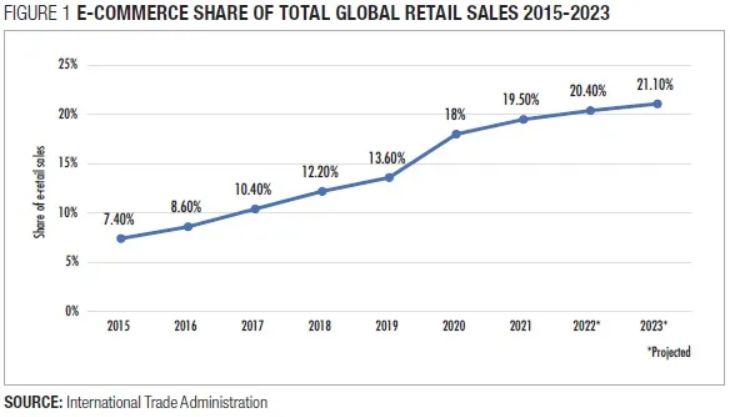The share of e-commerce is expected to reach 24.5 percent in 2025 from 8.6 per cent in total global retail in 2015, according to Daniela Coppola, a senior researcher at Statista, e-commerce is moving ahead and will continue to do so in the future while brick-and-mortar (B&M) stores are in secular decline.
While comparing it with a brick-and-mortar stores, the researcher said, the consumer can feel and actually try-on the garment, but it reduces design to the lowest common denominator. On the other hand, the goal of the e-commerce retailer is to differentiate themselves from everyone else. However, the problem occurs when they move into the big-time. So, we are moving into a new model which is the fusion of brick-and-mortar and e-commerce.

“If we tend to divide garment retail into two distinct sectors: E-commerce and Brick-and- Mortar (B&M), e-commerce is moving ahead and will continue to do so in the future while B&M is in secular decline.”
The e-commerce process is definitely rising but not the e-commerce sector because there is no distinct e-commerce sector. Today, every B&M store operates its own e-commerce website, while an increasing number of what we once termed pure-play e-commerce providers have opened their own B&M stores.
He said e-commerce is the opposite of B&M. The B&M store’s market is relatively small, based entirely on the number of potential consumers willing and able to travel to the store about 10 million. On the other hand, the e-commerce retailer’s market is the entire world 7.9 billion. Their potential customer base is 800 times the B&M store. The goal of the e-commerce retailer is to differentiate themselves from everyone else. The most successful e-commerce player is a small niche retailer.



